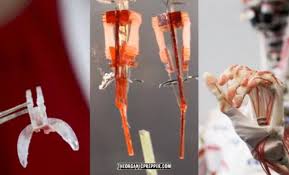
Breaking News
 Windows 10 is DEAD in 2025? -- Here's How I Run It SAFELY Forever (No Updates)
Windows 10 is DEAD in 2025? -- Here's How I Run It SAFELY Forever (No Updates)
 GENIUS ACT TRIGGERED: The Biggest BANK RUN in History is COMING – Prepare NOW
GENIUS ACT TRIGGERED: The Biggest BANK RUN in History is COMING – Prepare NOW
 European Billionaires Funneled $2 Billion into NGO Network to Fund Anti-Trump Protest Machine
European Billionaires Funneled $2 Billion into NGO Network to Fund Anti-Trump Protest Machine
 Japan Confirms Over 600,000 Citizens Killed by COVID mRNA 'Vaccines'
Japan Confirms Over 600,000 Citizens Killed by COVID mRNA 'Vaccines'
Top Tech News
 HUGE 32kWh LiFePO4 DIY Battery w/ 628Ah Cells! 90 Minute Build
HUGE 32kWh LiFePO4 DIY Battery w/ 628Ah Cells! 90 Minute Build
 What Has Bitcoin Become 17 Years After Satoshi Nakamoto Published The Whitepaper?
What Has Bitcoin Become 17 Years After Satoshi Nakamoto Published The Whitepaper?
 Japan just injected artificial blood into a human. No blood type needed. No refrigeration.
Japan just injected artificial blood into a human. No blood type needed. No refrigeration.
 The 6 Best LLM Tools To Run Models Locally
The 6 Best LLM Tools To Run Models Locally
 Testing My First Sodium-Ion Solar Battery
Testing My First Sodium-Ion Solar Battery
 A man once paralyzed from the waist down now stands on his own, not with machines or wires,...
A man once paralyzed from the waist down now stands on his own, not with machines or wires,...
 Review: Thumb-sized thermal camera turns your phone into a smart tool
Review: Thumb-sized thermal camera turns your phone into a smart tool
 Army To Bring Nuclear Microreactors To Its Bases By 2028
Army To Bring Nuclear Microreactors To Its Bases By 2028
 Nissan Says It's On Track For Solid-State Batteries That Double EV Range By 2028
Nissan Says It's On Track For Solid-State Batteries That Double EV Range By 2028
Scientists Have Created Programmable Robots Made of LIVING TISSUE. What Could Possibly Go Wrong?

Everyone knows that robots aren't living beings right? Well, we did. That is, until scientists and developers recently announced how they have bridged some of that gap between living and non-living beings.
This new development is a combination of artificial intelligence and biology. In fact, only this week, a research of roboticists and scientists published what is being referred to as a "recipe for making a new lifeform" called xenobots. The xenobots are made from stem cells and the term xeno comes from the frog cells (xenopus laevis) which are used to make them.
One of the researchers involved described the new creation as "neither a traditional robot nor a known species of animal" but instead it is a "new class of artifact: a living, programmable organism."
File this under "What Could Possibly Go Wrong?"
What is a xenobot?
The xenobots are less than 1mm long and are contain 500-1000 living cells. They have a number of shapes, mostly simplistic with some having squat "legs." They are able to propel themselves in linear or circular directions, move small objects, and join together to act collectively. They are able to live up to ten days using their own cellular energy.
Scientists claim that these new "reconfigurable biomachines" can improve human and animal health, but there are many concerns from legal and ethical standpoints.

 Carbon based computers that run on iron
Carbon based computers that run on iron

